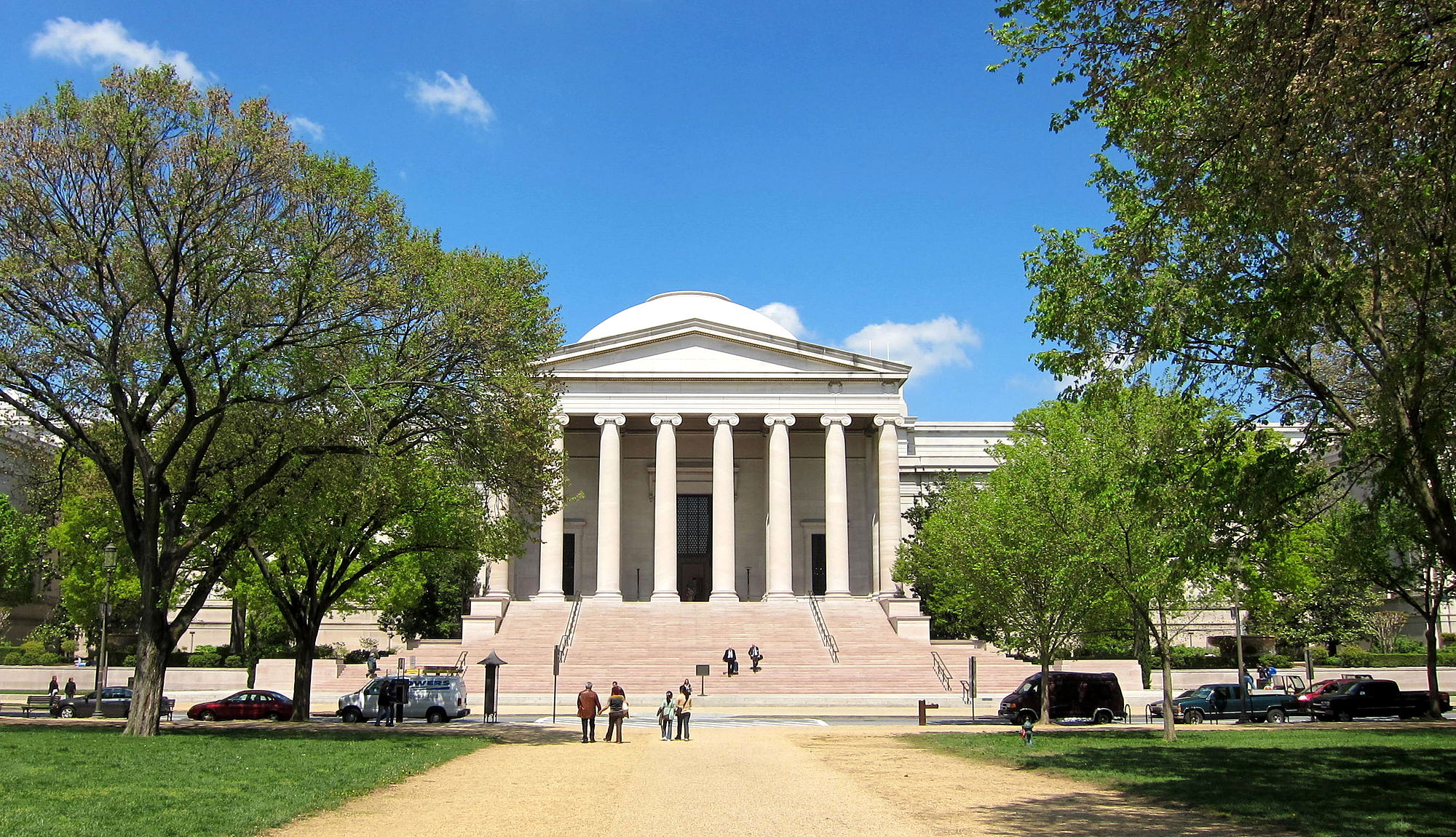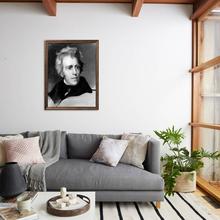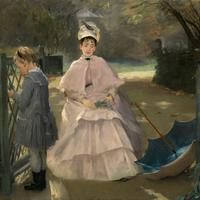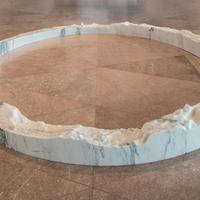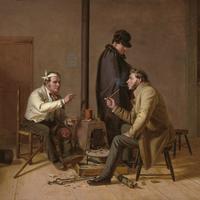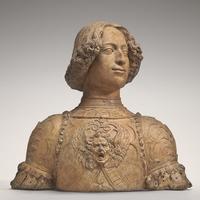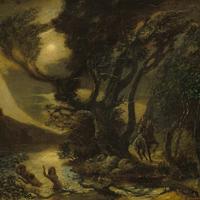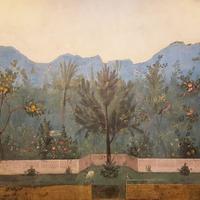More about National Gallery of Art
- All
- Info
- Shop

Contributor
Love open spaces, clean lines, or just need a place to breath and find a bit of peace in the nation's capital? You'll love I.M. Pei's East Wing of the National Gallery.
You can't have all that open space and lots of art too. Here the architect rules, one I.M. PEI, creator of the Louvre pyramid.
In the atrium, a giant 920-lb. Calder mobile floats from the ceiling. But it's difficult to appreciate the wonderful forms because of the mishmash of skylights directly above it.
And so it is with the 15-ton (really!) Henry Moore sculpture adjacent to the entrance. The elderly Moore wanted it out in front, unobstructed by the building. The last thing Pei wanted was a 17-foot bronze sculpture to compete with his design, so he pushed it under the overhang. The architect rules.
The National Gallery is a family project. The West Wing was completed in 1937 with big bucks from Andrew Mellon – one of the ten wealthiest men in the United States at that time. Then in 1978 Mellon's son Paul and daughter Ailsa Mellon Bruce funded the construction of the East Wing.
PEI unites the two very different buildings by using the same pink marble of the West Wing exterior for that of its eastern counterpart. Unfortunately, the exterior of the building suffered structural failure and had to be totally rebuilt 30 years later. Oops! Ruling architect messes up.
Must sees or (stuff I like):
- Light installation (40,000 LEDS) by Leo Villareal in the Concourse connecting the East and West wing
- Great gift shop
- The room devoted to Alexander Calder filled with lots of cool mobiles casting amazing shadows
- The Max Ernest sculpture in the Atrium depicting a rather strange family
- Henry Moore's very large sculpture out front
- I.M. Pei's signature glass pyramids in the courtyard – mini versions of his huge Louvre pyramid (think Da Vinci Code).
Best of all: admission is free!
Featured Content
Here is what Wikipedia says about National Gallery of Art
The National Gallery of Art is an art museum in Washington, D.C., United States, located on the National Mall, between 3rd and 9th Streets, at Constitution Avenue NW. Open to the public and free of charge, the museum was privately established in 1937 for the American people by a joint resolution of the United States Congress. Andrew W. Mellon donated a substantial art collection and funds for construction. The core collection includes major works of art donated by Paul Mellon, Ailsa Mellon Bruce, Lessing J. Rosenwald, Samuel Henry Kress, Rush Harrison Kress, Peter Arrell Browne Widener, Joseph E. Widener, and Chester Dale. The Gallery's collection of paintings, drawings, prints, photographs, sculpture, medals, and decorative arts traces the development of Western art from the Middle Ages to the present, including the only painting by Leonardo da Vinci in the Americas and the largest mobile created by Alexander Calder.
The Gallery's campus includes the original neoclassical West Building designed by John Russell Pope, which is linked underground to the modernist East Building, designed by I. M. Pei, and is next to the 6.1-acre (25,000 m2) Sculpture Garden. The Gallery often presents temporary special exhibitions spanning the world and the history of art. It is one of the largest museums in North America.
Attendance rose to nearly 3.3 million visitors in 2022, making it first among U.S. art museums, and the second on the list of most-visited museums in the United States. Of the top three art museums in the United States by annual visitors, it is the only one that has no admission fee.
Check out the full Wikipedia article about National Gallery of Art

